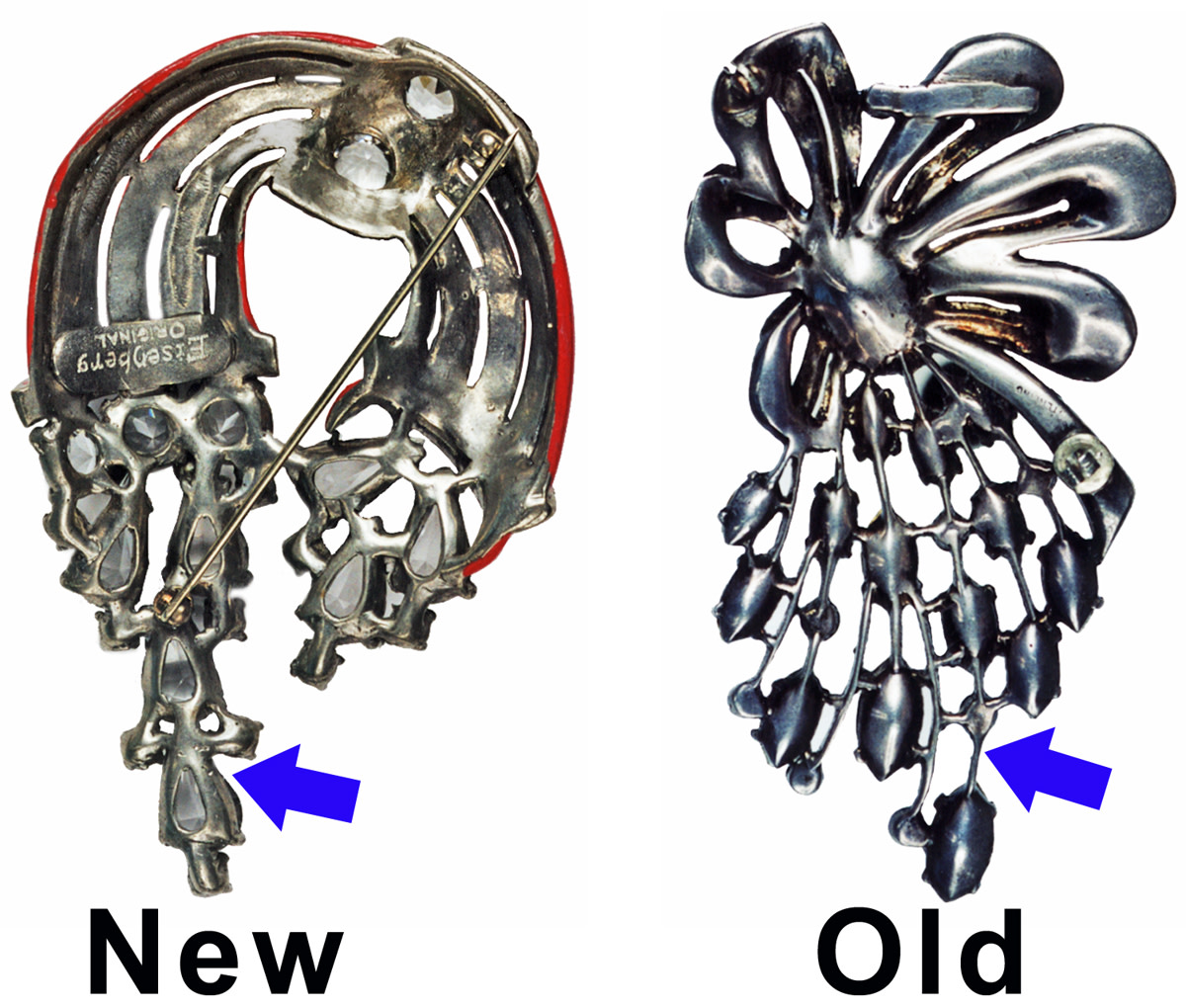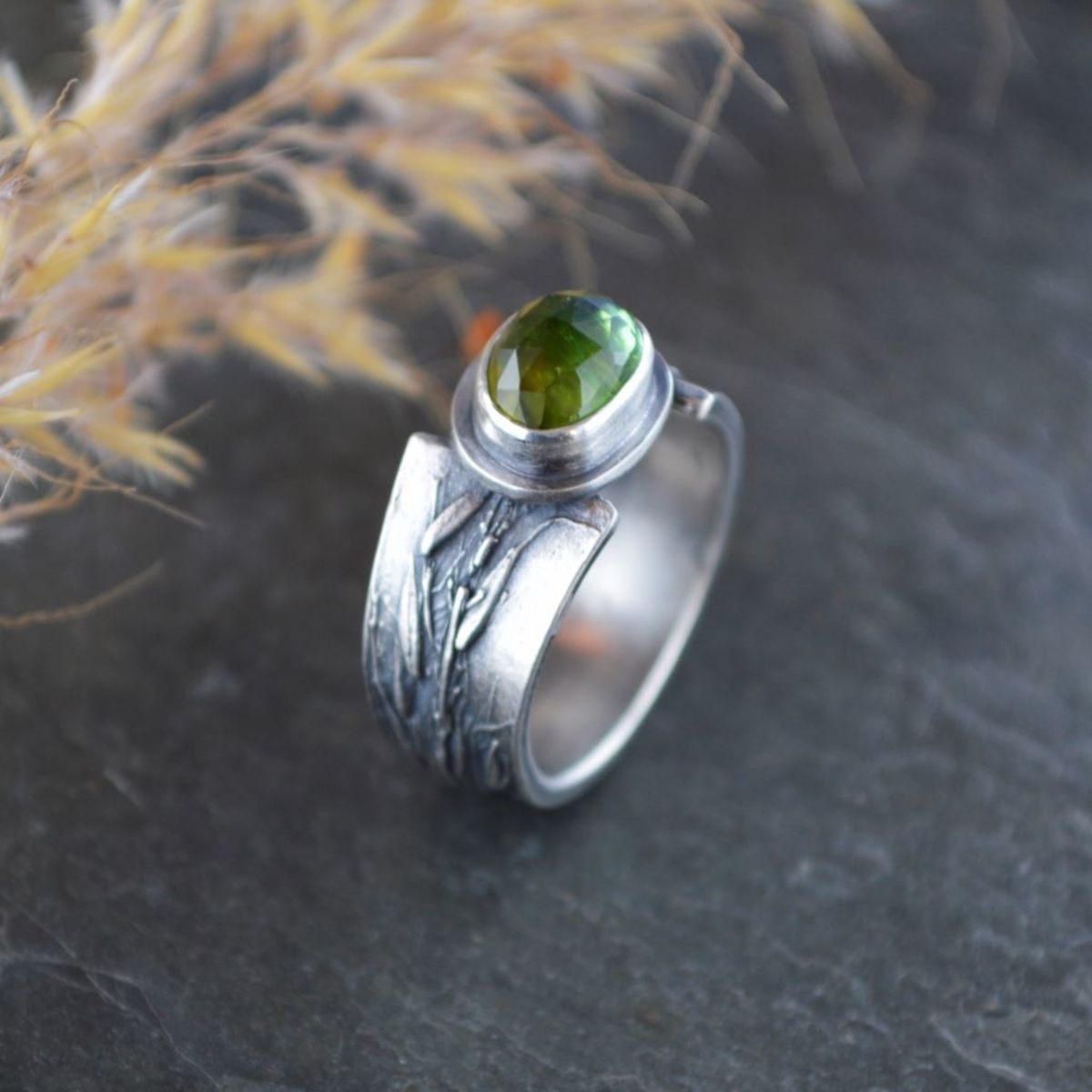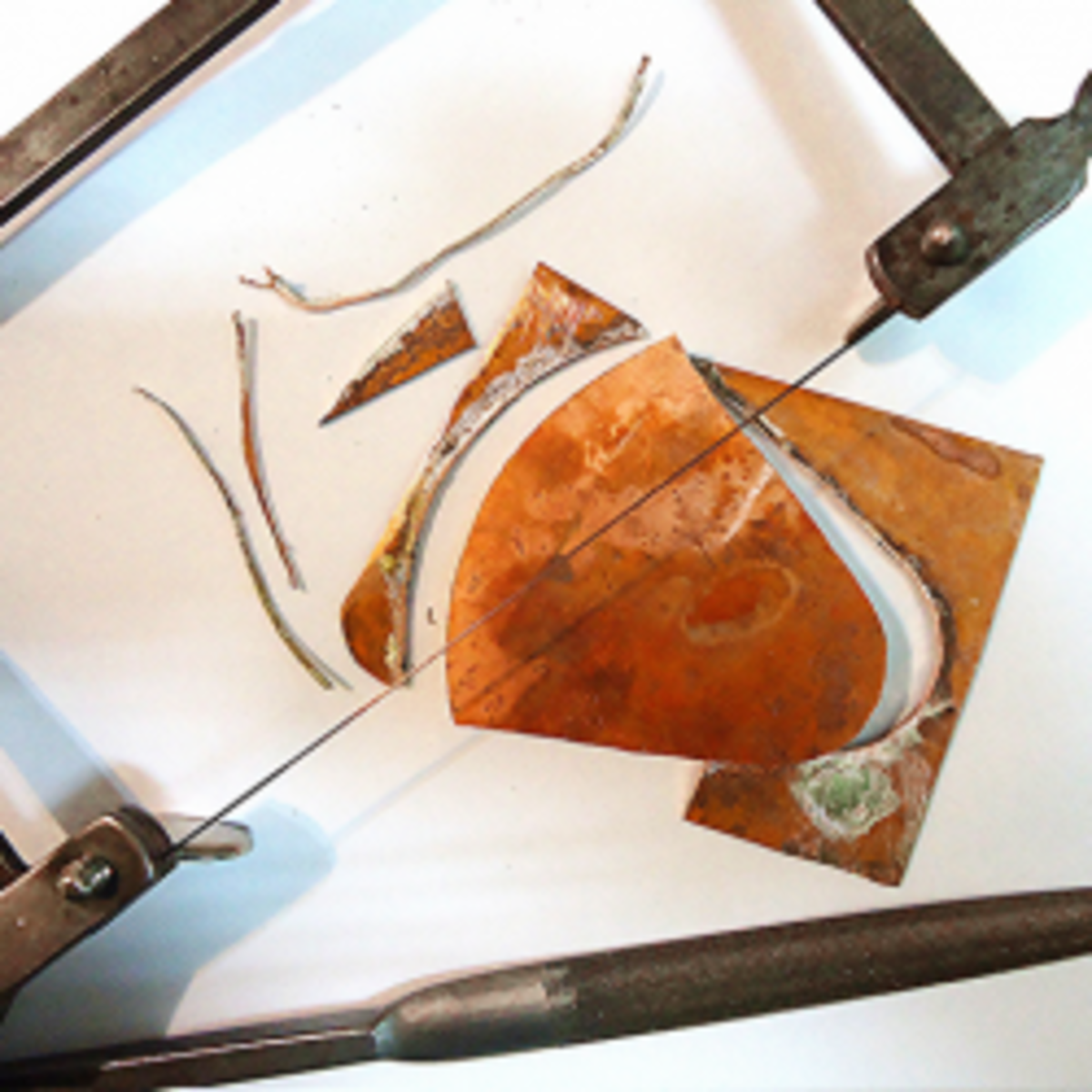Authenticating Bakelite Jewelry Without Chemicals
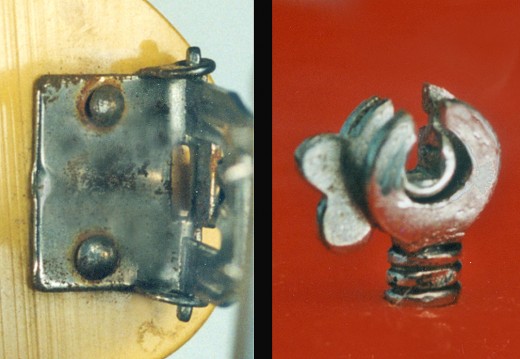
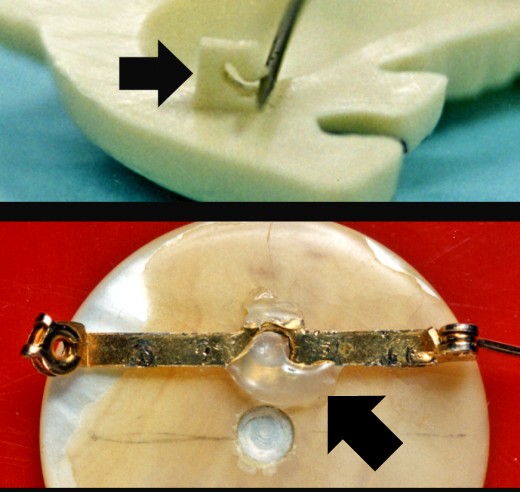
The standard approach to authenticating vintage Bakelite jewelry for many years has been to dab the suspect surface with some kind of chemical component—most commonly household cleaners like 409 and Scrubbing Bubbles or polishing agents like Simichrome—with a cotton swab. A brownish yellow stain on the swab was considered proof the piece tested was vintage Bakelite.
Although this procedure is widely touted as infallible—especially in “how to” online articles—virtually no one points out its problems and pitfalls. It is rarely mentioned, for example, that this procedure almost never works on a recently cleaned or polished piece of authentic Bakelite. No one knows for sure the time that must lapse but it could be as long as 3 to 5 years or more between cleanings for certain pieces to produce the stain. Further, even if genuinely old Bakelite is never cleaned, certain colors such as black and some reds may produce confusing results.
It’s also a hassle to drag the chemicals along to public auctions, shows, flea markets and antique malls let alone trying to take a small amount aboard an airplane. And how do you test a piece offered online? Learning the physical properties of genuine Bakelite and looking for those properties in suspect jewelry is a more thorough and far less messy method of separating old from new than chemical testing.
Let’s begin by discussing what Bakelite really means. “Bakelite” was the original trade name for the first thermosetting phenolic resin, mixture of carbolic acid (phenol) and formaldehyde. It was invented by Leo Bakelite in 1907 as an insulator against heat and electricity. As ways were found to manufacture Bakelite in bright colors, it began to be used for all sorts of decorative objects, especially jewelry. Although Bakelite was the first thermosetting phenolic resin, it was not the only one. Important trade names of similar products include Catalin, Marblette, Prystal, Phenolia and a number of others. Collectors, though, have come to use “Bakelite” to refer to all thermosetting phenolic resins regardless of original brand name or manufacturer and that’s how it will be used in this article, as a generic reference to all collectible thermosetting phenolic resins.
One of the keys to identifying original Bakelite jewelry is to understand how it was manufactured versus modern plastic lookalikes. Modern hard plastics are produced by injecting a liquid resin into a mold. In other words, to get a pin or brooch shaped like a dog, you’d pour or inject molten plastic into a dog-shaped mold. All the details of the finished product—eyes, collar, ears, nose and hanging loop—are created in the mold. When the mold is opened, out comes one single piece with at least one or more mold seams.
By contrast, vintage Bakelite jewelry never has a mold seam. Vintage Bakelite jewelry was not molded but assembled by hand from simple stock shapes of Bakelite such as cylinders, tubes, sheets, blocks and cubes. If you wanted to make a pin or brooch shaped like a dog, you’d cut a dog shape from a sheet of one color of Bakelite. You’d then add more separate pieces of different colors to complete the desired design. This might include eyes cut from a rod or tube, ears from a sheet of another color and so on Additionally, the raw Bakelite might carved, set with faux stones or laminated with other materials such as colored metals.
Keep in mind, though, there is a surprising amount of original unfinished Bakelite stock that has survived. This old but never-used stock can be carved today and offered as vintage Bakelite. Genuine vintage jewelry that is plain and low value, is frequently recarved into more desirable and higher priced designs. If you rely on chemical testing alone, you can easily mistake this reworked but genuinely old stock for original period jewelry.
One way to confirm the age is to carefully examine the findings, or hardware, such as pins, hinges, etc. Findings on genuine vintage Bakelite jewelry are generally attached with mechanical fasteners such as tiny screws, pins and nails. Findings in modern plastic and reworked old Bakelite stock are typically glued. Original metal findings almost always show some tarnish or even rust. Be wary of shiny hardware with no sign of normal age or wear.
Nearly all vintage Bakelite jewelry was hand worked, sawed and carved and generally has some tool marks. Vintage tool marks are, however, at the very least, tumbled and rounded off, never jagged or sharp. Original tool marks should also be located logically. An original carver, working by the hour or piece-rate, polished exposed surfaces, not hidden surfaces concealed from view. Surfaces of reworked or newly carved pieces are sometimes completely polished on all sides, regardless if the surface is exposed to view or hidden. Grinding marks with a frosted, chalky appearance are also a typical sign of a recently carved or reworked surface. Since genuine Bakelite produces a patina, outer surfaces on truly vintage pieces should normally be darker than protected inner surfaces. Insides of bracelets, for example, are generally lighter in than the exposed outer surfaces. Backs of pins and earrings should also be lighter than exposed outer surfaces.
When testing Bakelite, always use safe, nondestructive tests like those described here. Never use a heated pin or open flame. And always ask the seller’s permission before making any tests. Keep in mind too, that really clever forgers study original manufacturing techniques and duplicate them when making very time consuming deliberate fakes of very expensive originals.
Mark Chervenka for Ruby Lane


